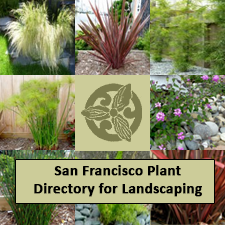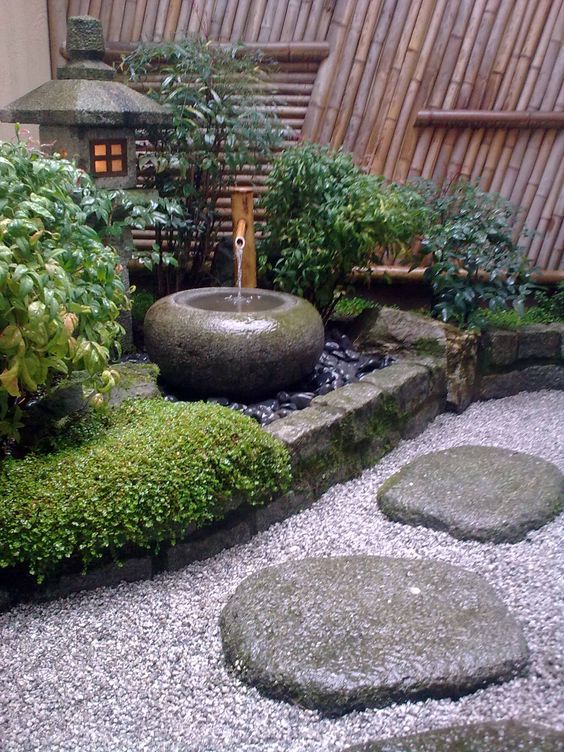
What is it that makes Japanese garden design seem so peaceful and serene? Is it the delicate flowers? The small, yet stately boulders? The obligatory stone lanterns? Or is it something more?
In Japanese garden design, you have to take several things into account. What flowers would grow best, how to lay it out so the minds’ eye flows from place to place, water feature or no water feature. -But the number one thing that makes the most difference is enclosure.
Designing Your Secret Japanese Garden
There are many types of gardens: tea gardens, Zen gardens, stroll gardens, and so on. However, most Japanese gardens hold one thing in common. Each garden has either fencing or natural objects to enclose the place in quietude. The garden is for serene thoughtfulness and meditation, of drawing the minds’ eye to the beauty of nature – in other words, peaceful activities.
Fencing
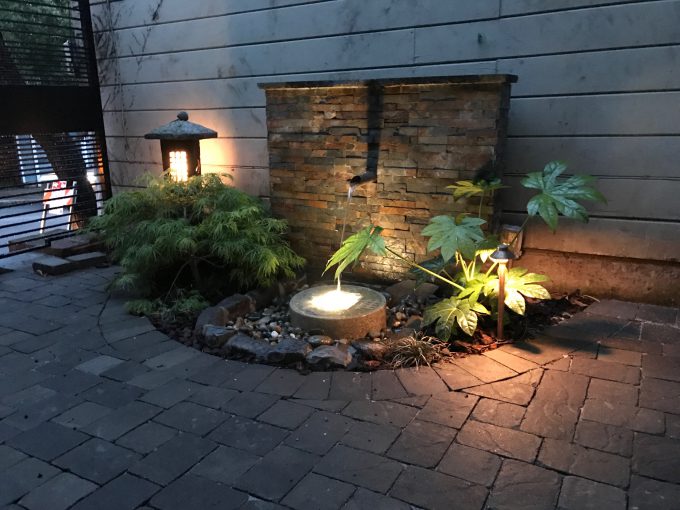
Most backyards in San Francisco have fencing anyway, but what kind of fencing is it? Natural colors and elements are best. In other words, a stone wall would be a good background. This water feature installation is a good example of a natural stone background. Notice how the stone stands behind the water feature and plants as a solid, quiet statement. It doesn’t stand out; instead it pulls the foreground together.
That’s the purpose of the chosen background, whether stone or wood. Wood should also be natural – not painted, but stained so that it’s color remains whether it’s redwood, pine or other wood type.
Plantings
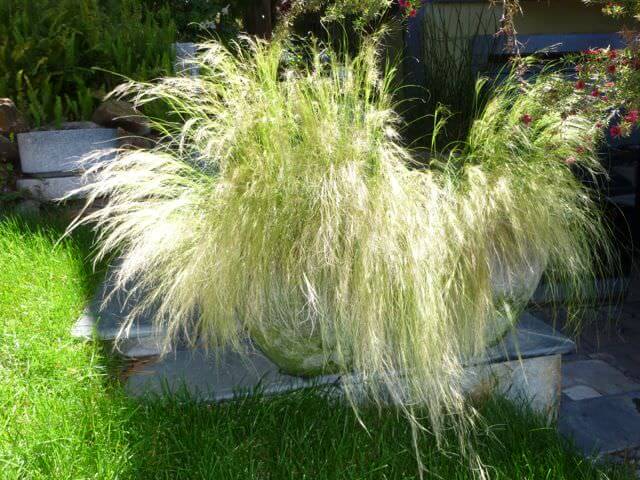
Fencing isn’t the only way to enclose your place of quiet thought. Ground cover, bushes and trees can also be used to effect the way a garden feels. For example, moss is used quite often in Japanese garden design – mainly for the exact reason we’re discussing. Moss has a tendency to act like snow; causing a muting effect on sound. With the softer moss for sound to bounce off of rather than hard surfaces, it doesn’t travel quite so far.
Thick bushes have the same benefit, such as Japanese boxwood. When pruned, the Japanese boxwood has the rounded look so familiar to the Japanese garden lover. Even the taller grasses, such as Mexican feather grass, can have the muting effect.
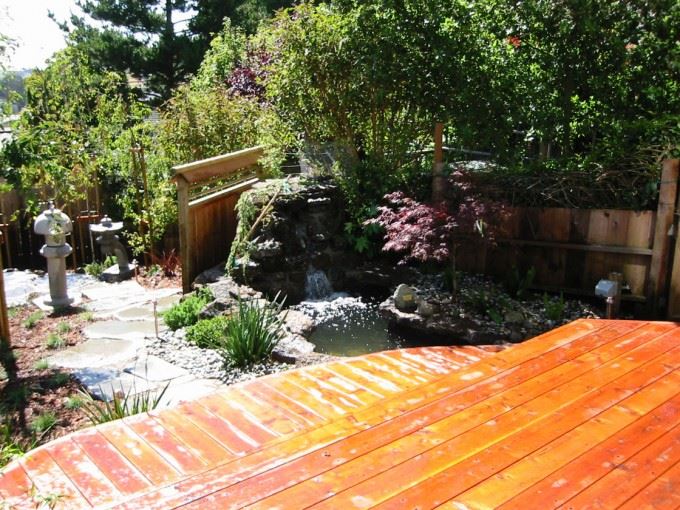
Trees are also often used to create the feeling of seclusion. One of the things we often do to add to the idea that you’re in a quiet, enclosed space is to use natural fencing and then plant trees and larger bushes against or near the fencing. As you can see in the image, it doesn’t hide the wood of the fence completely, but does further close off the garden.
Incorporating Serenity Into Your Japanese Garden Design
It doesn’t take much to turn a San Francisco backyard into a Japanese garden. In fact, when it takes more, it’s just not the same. Once you have how you’re going to design the backdrop, as mentioned above, the secret it’s enclosing gets easier to see.
Here are a few tips to help you create an oasis of serenity in the midst of San Francisco’s busyness:
Less really is more.
Many picture the strolling gardens in Japan when they picture Japanese gardens, but private gardens seldom hold so many plants and features. In fact, if you were to scale down the strolling gardens, you’d find that the ratio of plant-to-space is about the same. In others words, choose your features – plants, water, stone, lantern, bridge, pagoda – carefully. Thoughtfully.
Arrangement is everything.
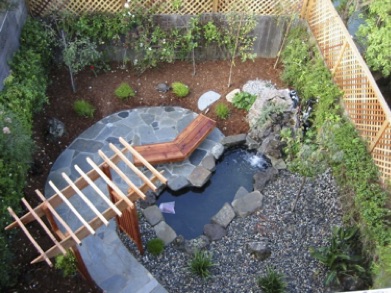
Yes, it’s possible to have a water feature, pagoda, lantern and plants all in one small San Francisco backyard. We’ve done it. But if you want all of those features, how will you put them together to create something pleasing, rather than something that looks jumbled together?
Creating illusions can help
Better yet, if you want these features but don’t have the space, what’s the best way to create the illusion of these things? In fact, the Japanese often use smaller elements to represent larger ones. You might see a large boulder with a few smaller boulders around to represent a mountainside. Or stones in a pond to represent ships. If you can’t fit the actual feature, how can you scale it down to retain an element?
Understated, not overrated

As a final tip, remember that Japanese garden design shouldn’t include a riot of color. It’s not supposed to shock the eye, but instead, should slowly pull you in and embrace you. That’s not to say you can’t have color –
Hydrangeas, for example, are a beautiful addition to many Japanese gardens. Ornamental cherry trees are another example. But again, carefully choose the plants you have, so that they compliment the landscape you’re building.
If you need help designing your garden, contact Tamate Landscaping. Japanese garden design is our specialty. We look forward to discussing your project!

